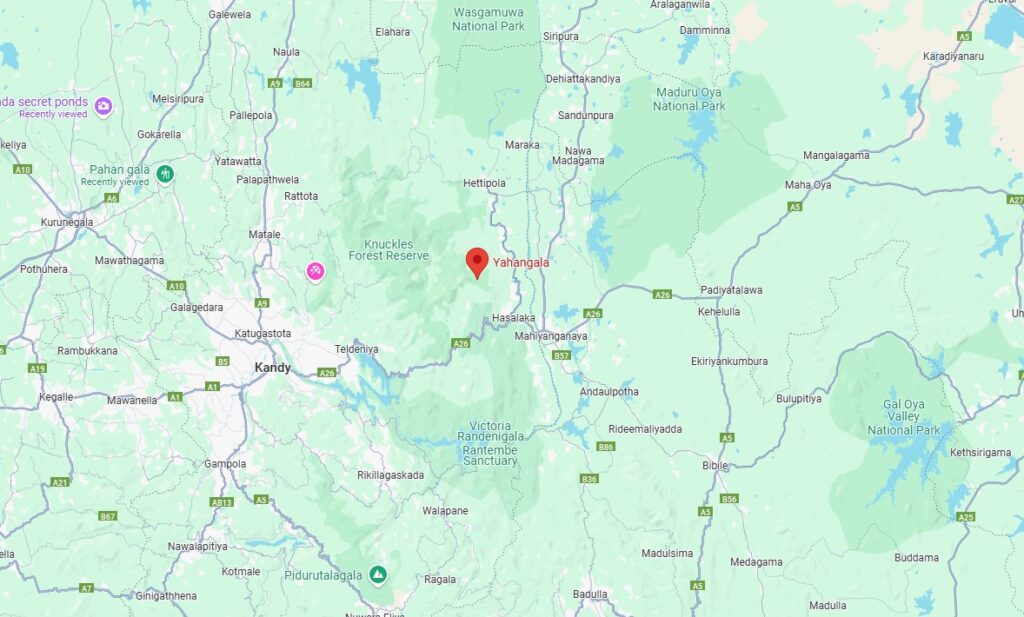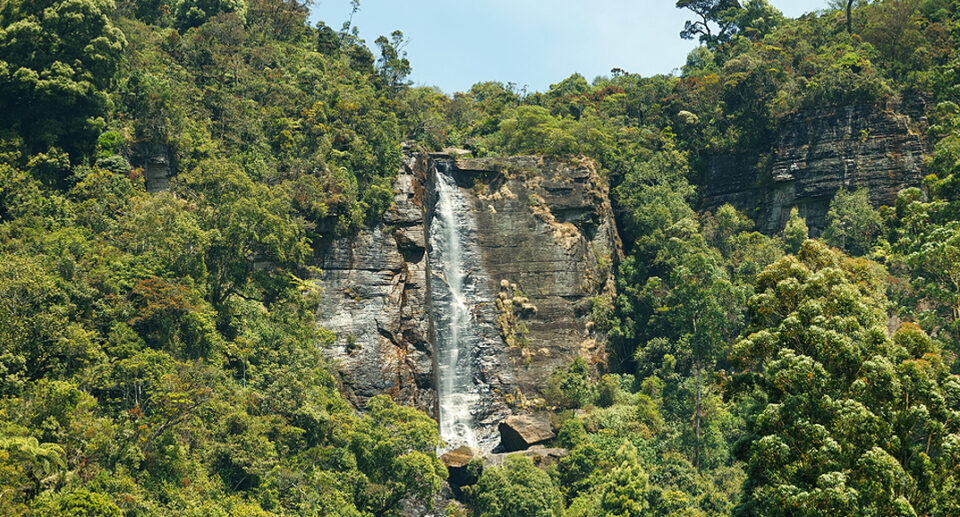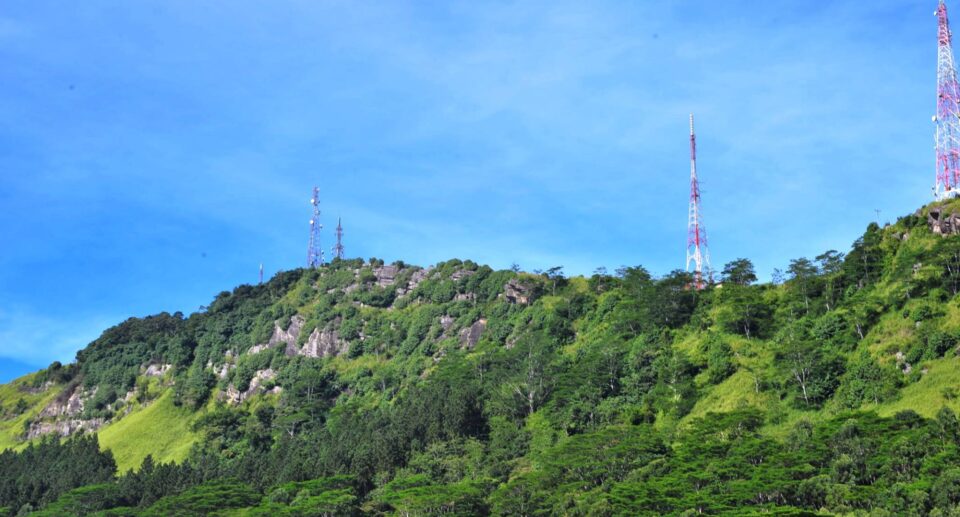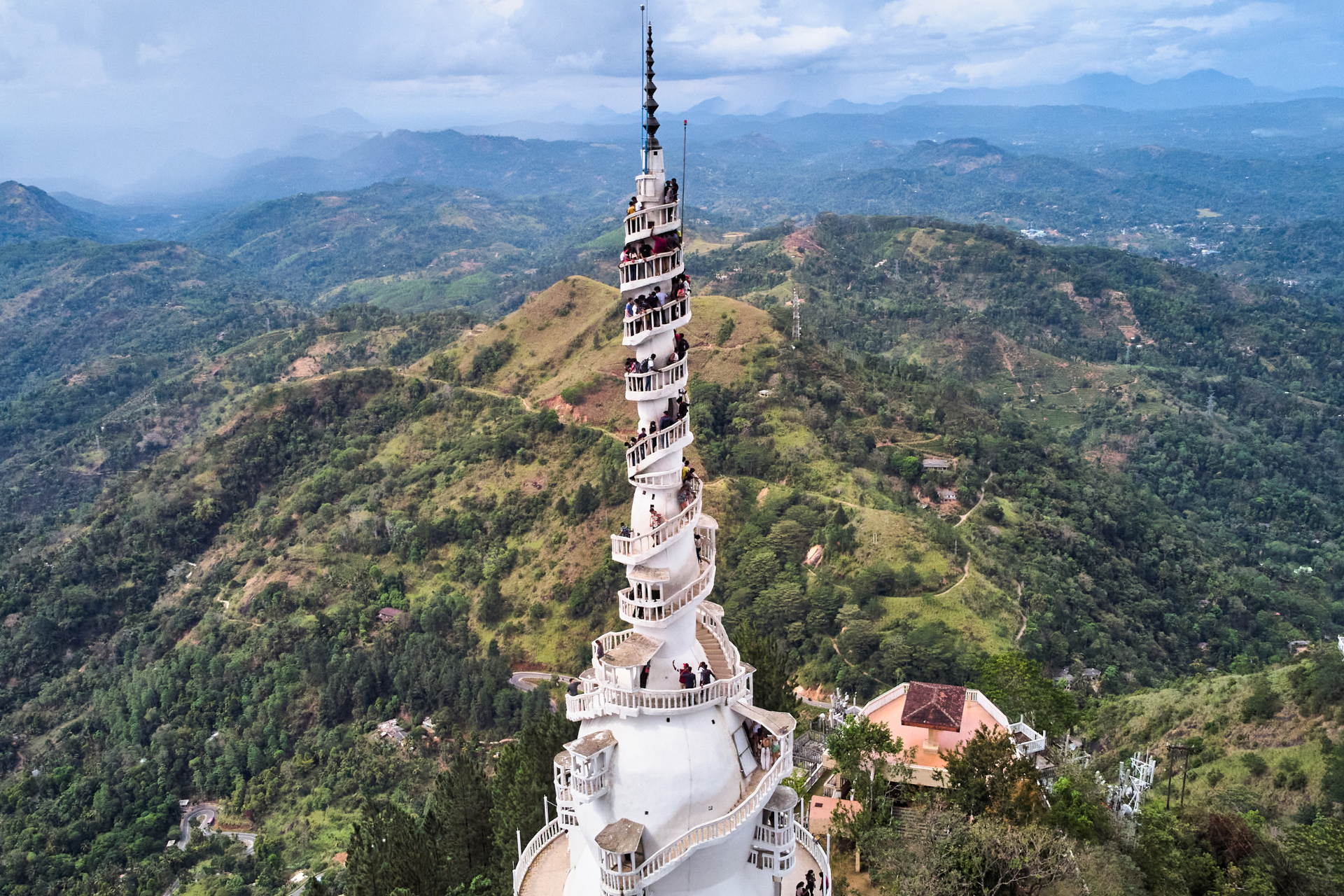Yahangala: The Sacred Rock of Sri Lanka
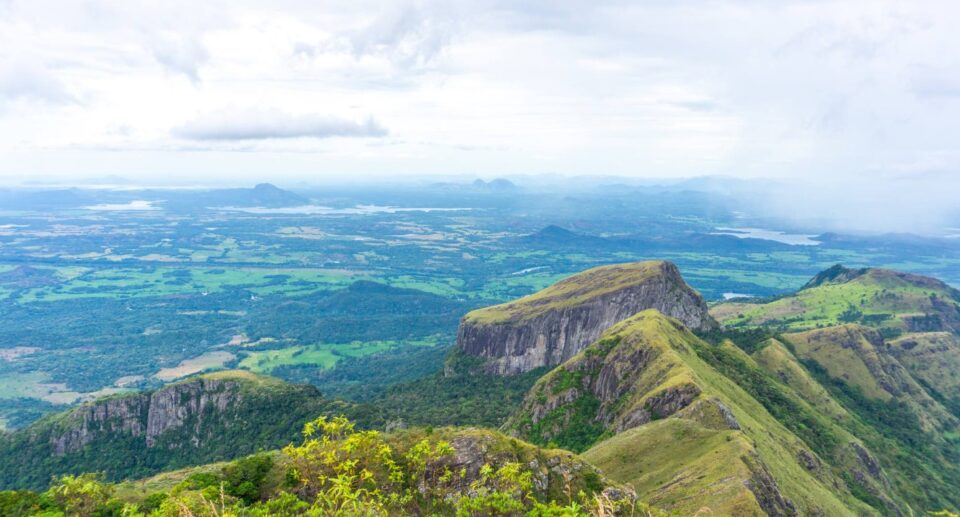
The Sleeping Giant of Sri Lanka’s Knuckles Range
Sri Lanka is a land famous for its diversified geography and cultural diversity. Of its natural splendors, Yahangala, a mountainous feature in a sole geographical location at the eastern edge of the Knuckles Mountain Range, is a geological marvel as well as an area of historical and mythological significance. Standing at approximately 1,220 meters above sea level, Yahangala, which translates literally as “bed rock” or “sleeping rock” in Sinhala, derives its name from the unusual shape of the mountain, which appears to be a giant lying on his back in deep slumber. It is not just a trekker’s spot and nature lovers’ retreat, but also a symbol well entrenched in the history and local lore of the region.
Geographical Location and Landscape
Yahangala occurs in the Kandy District in the center of Sri Lanka, bordering the Knuckles Conservation Forest. Yahangala is a UN World Heritage Site of biodiversity and mountain coolness, and Yahangala is a significant part of this mountain system. So distinctive and dramatic is Yahangala due to its tremendous rock face and perpendicular cliff faces that at distance resemble the contour of a reclining figure.
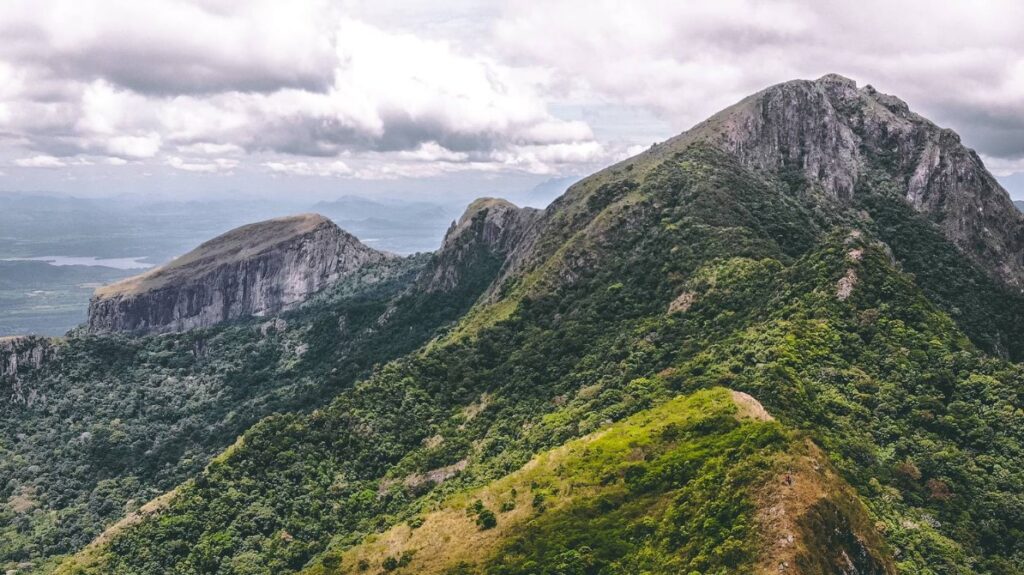
Unlike the forest-covered peaks elsewhere in the region, Yahangala’s peak is largely rock surface, offering a 360-degree view of the surrounding countryside. On a clear day from the peak, visitors are treated to an unobstructed glimpse far into the central highlands, with Mahiyanganaya, Hasalaka, and the curving course of the Mahaweli River visible in the valleys below. The flatness of the peak has made it a favorite site for overnight camping, photography, and stargazing.
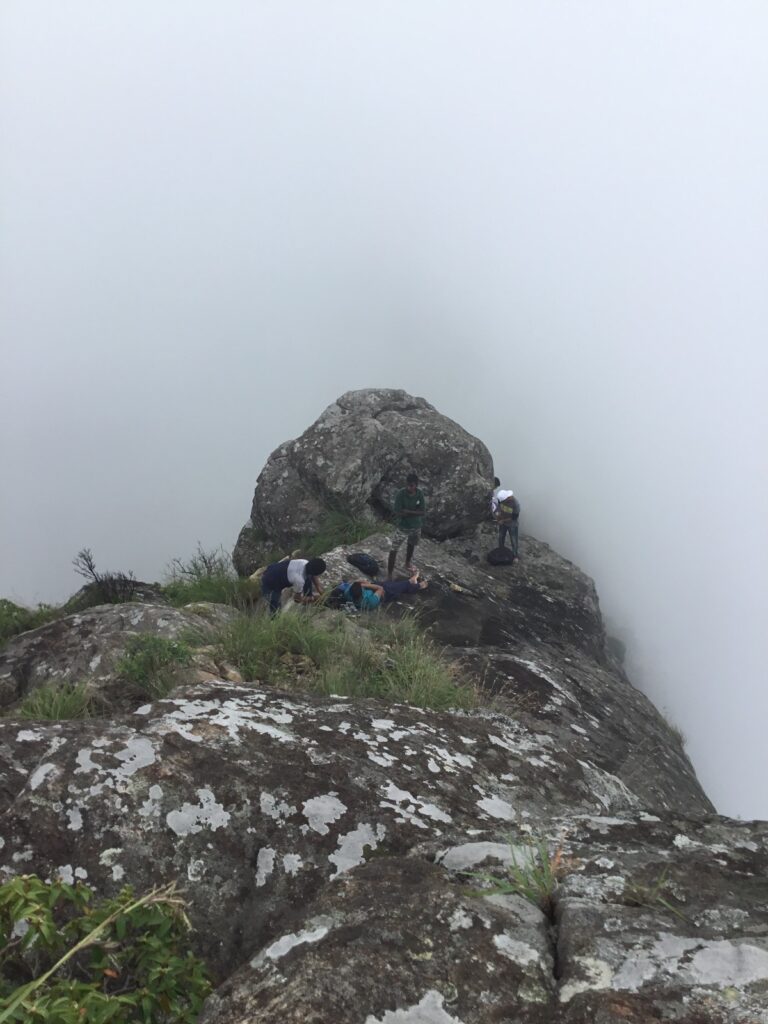
Cultural and Mythological Importance
Yahangala is not only a geographical feature; it is steeped in legend. One of the best-known tales associated with this mountain is one which identifies it with King Ravana, a central figure in the ancient Hindu epic, the Ramayana. According to local mythology, after his defeat by Lord Rama, King Ravana’s body came to lie on this very same mountain. The reclining rock is said to be shaped like his final resting position.
Yahangala has become surrounded with a mystique and aura of sanctity by the myth. Locals believe the mountain is guarded by supernatural custodians, and others regard it as a shrine. Trekkers often leave offerings or conduct small ceremonies at the summit as a gesture of respect and religious admiration.
There is also the belief in the Gale Bandara Deviyo, a god who protects this region’s mountains and forests. The locals traditionally leave offerings in order to ensure safe travel as one ventures into the Knuckles wilderness, especially before climbing Yahangala. These customs demonstrate how spiritually valued Sri Lankans perceive nature.
The Hiking Experience
The ascent to the summit of Yahangala is a challenging but rewarding experience. Most trekkers begin at Kalugala or Medamahanuwara, small villages in the foothills. The trek usually lasts 3 to 5 hours depending on the route, the weather, and the physical fitness of the trekkers. Compared to other tourist-frequented trekking destinations, Yahangala is fairly untouched, and it is therefore perfect for those who desire solitude and a closer connection with nature.
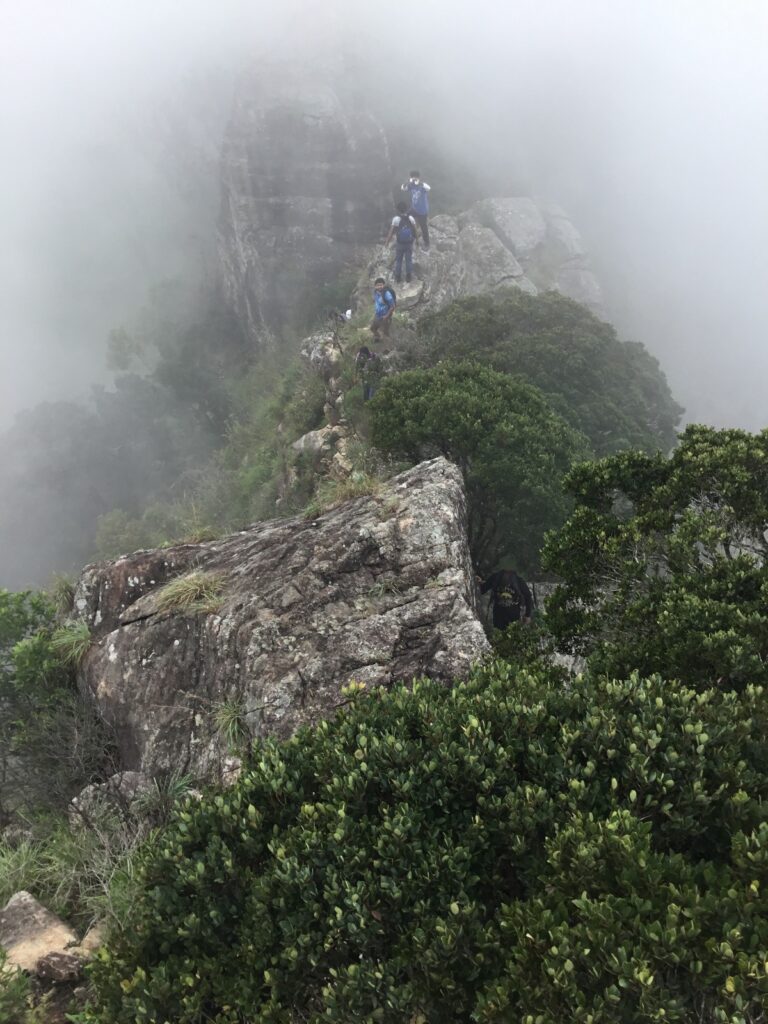
The hike begins on narrow forest paths, gradually ascending to grasslands and rocky outcrops. Along the way, hikers will see a variety of vegetation, from ferns and mosses to giant native trees. The Knuckles region contains some of Sri Lanka’s richest biodiversity, and lucky hikers might spot sambar deer, monkeys, or a variety of endemic bird species.
The trek boasts one of its most memorable parts in its final stretch: a slippery and quite hazardous rock climb up to the summit. The trail consists of huge boulders and potentially icy footing, especially in or shortly after rain. The climb is not recommended for amateur hikers unless there is a guide, but climbers rewarded with reaching the summit are given one of the most stunning views in the island’s interior highlands.
Camping at the top is a favorite of seasoned trekkers. The broad, flat rock face provides enough space to camp and see the starry sky. Dawn from the Yahangala summit is a heavenly experience in itself—the rolling fog over the valleys, golden hue on the surrounding hills, and birdsong to awaken create an experience of irreplaceable natural beauty.
Flora and Fauna
Yahangala is part of the Knuckles Biosphere Reserve, which is famous for its unique biodiversity. The mountain and surrounding environment consist of a variety of ecosystems, including montane forests, grasslands, and cloud forests. This region is inhabited by numerous endemic and endangered species, including the Knuckles pygmy lizard, Sri Lankan leopard (although very rare in these areas), and a variety of amphibians and orchids.
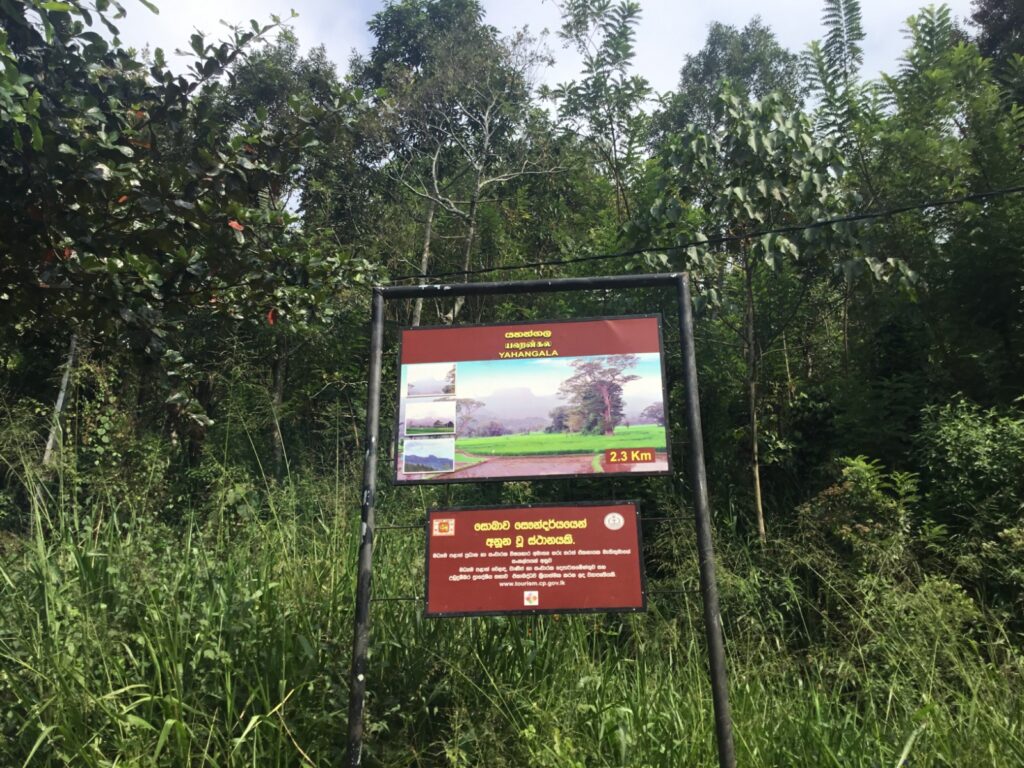
Lower Yahangala slopes are adorned with thick coverings of bamboo patches, wild flowers, and medicinal plants used in Ayurvedic traditional treatments. During the two monsoon months, the forest is filled with the sound of flowing streams, waterfalls, and croaks of frog and toads.
Tourist Tips
Despite Yahangala being such a stunning location, it is not bereft of the requirement for respect and preparation:
Guides: It is strongly recommended to take on the services of a local guide. They are thoroughly familiar with the land, the wildlife, and the cultural mores of the region.
Safety: The final climb can be dangerous in bad weather. Slippery rocks and sheer cliffs demand caution.
Camping: If camping overnight, pack enough water and warm clothing. It can be extremely cold at night.
Leech Protection: Leeches infest the trails, especially when it rains. Carry leech repellent or salt.
Leave No Trace: Travelers are kindly requested to preserve the natural beauty of the place by not littering and wildlife harassment.
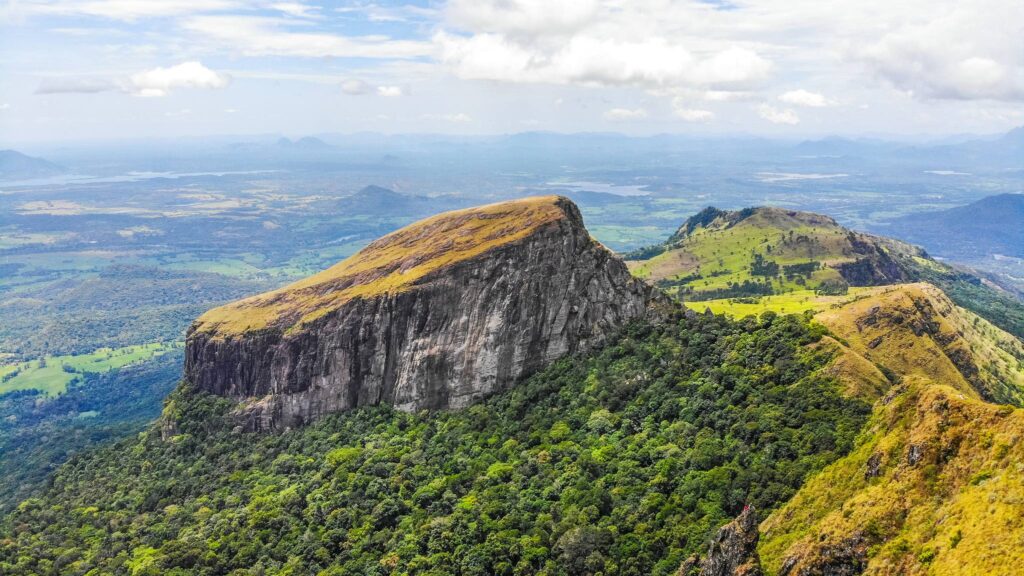
The Future of Eco-Tourism in Yahangala
As more individuals are becoming interested in eco-tourism and sustainable travel, Yahangala has the potential to be the center of Sri Lanka’s adventure tourism. But any development should be such that the ill effects of mass tourism should not spoil its beauty in the form of deforestation, pollution, and loss of habitat.
Local people are already beginning to benefit from eco-tourism in the form of guiding, homestays, and local transport. These promote conservation while generating economic advantages to rural villagers, promoting a symbiotic relationship between preservation and tourism.
Yahangala is not just a hill but a living legend chiseled into stone, a sacred place of fables, and an abode of unspotted beauty. Be it the attraction of King Ravana’s legend, the adventure of a steep climb, or the serenity of unexplored wild, Yahangala has something that is humble-making and life-altering.
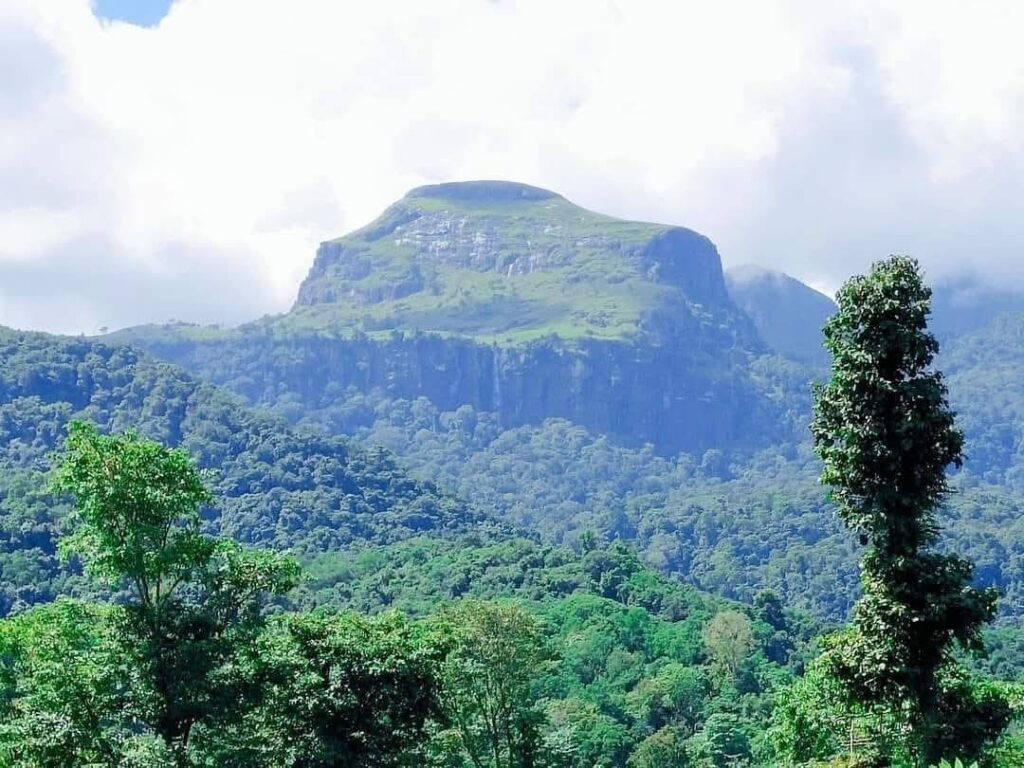
In a world fast losing its pristine landscapes, Yahangala is a beacon of what nature, culture, and myth can create if left alone. It is a sleeping giant resting over the valleys, yet to be unearthed by those who care to seek it out and have the humility to respect it.
How to Go to Yahangala, Sri Lanka
Yahangala is located on the eastern edge of the Knuckles Mountain Range, near the village of Kalugala in the Kandy District. Getting there involves a combination of road travel and a moderate to challenging hike.
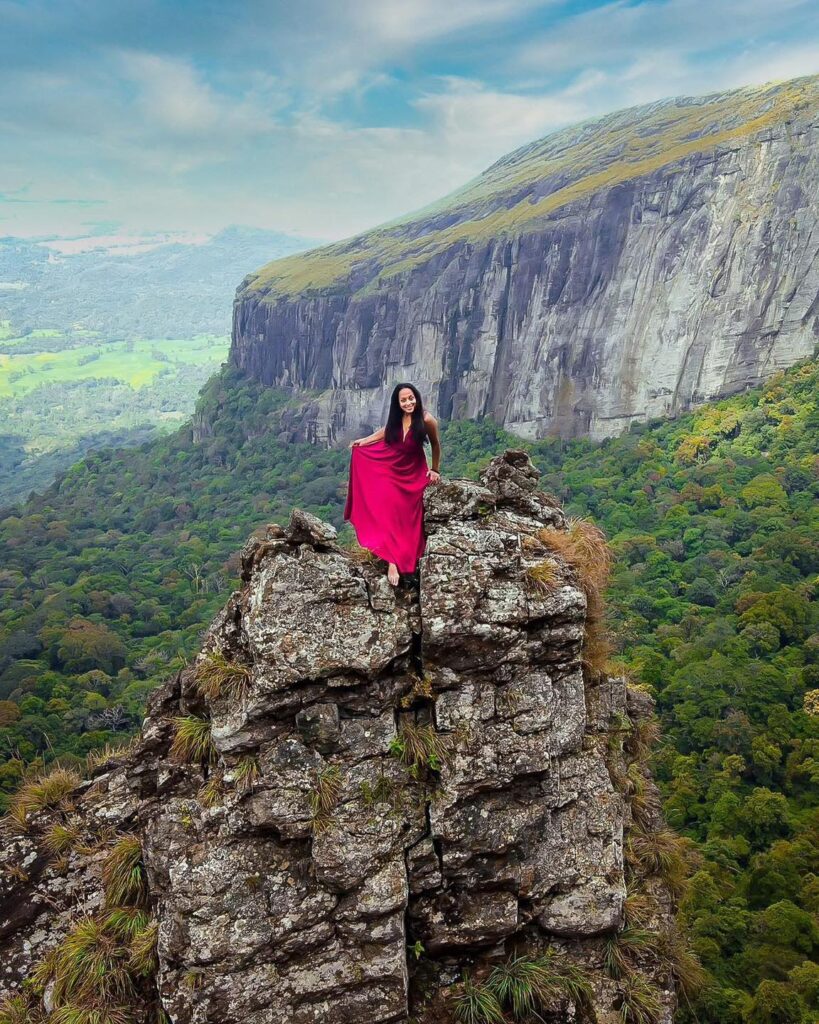
Location Summary
- Province: Central Province, Sri Lanka
- Nearest Towns: Mahiyanganaya, Hasalaka, and Kandy
- Trailheads: Kalugala or Madamahanuwara village
Step-by-Step Travel Guide
Option 1: From Kandy (Most Common Route)
- Drive from Kandy to Kalugala
- Distance: 60 km
- Time: 2 to 2.5 hours by car or tuk-tuk
- Route:
Kandy ,Digana, Teldeniya, Medamahanuwara, Kalugala - Road: Scenic but narrow and winding in parts
- Start the hike from Kalugala
- From Kalugala Temple or nearby trailheads, start the 3–4 hour hike to the summit.
- Trail passes through forest, grasslands, and rocky sections.
Option 2: From Mahiyanganaya Side
- Drive to Mahiyanganaya – Hasalaka – Meemure/Kalugala area
- Less common but scenic route, typically used by those coming from the Eastern Province.
The Hike
- Hiking time: 3 to 5 hours (one way), depending on trail and fitness level.
- Difficulty: Moderate to challenging
- Trail highlights: Forest paths, grasslands, panoramic viewpoints
- Final stretch: Steep rock scramble—best attempted with a guide
Tips for Visiting Yahangala
- Hire a local guide – The trail is not always clearly marked.
- Start early – To avoid heat and afternoon mist or fog.
- Bring water and snacks – No water sources along the trail.
- Camping – Possible at the summit, but bring your own gear.
- Leech protection – Especially in rainy months (use salt or repellent).
- Phone signal – Weak or unavailable in most parts.
Map of Yahangala
